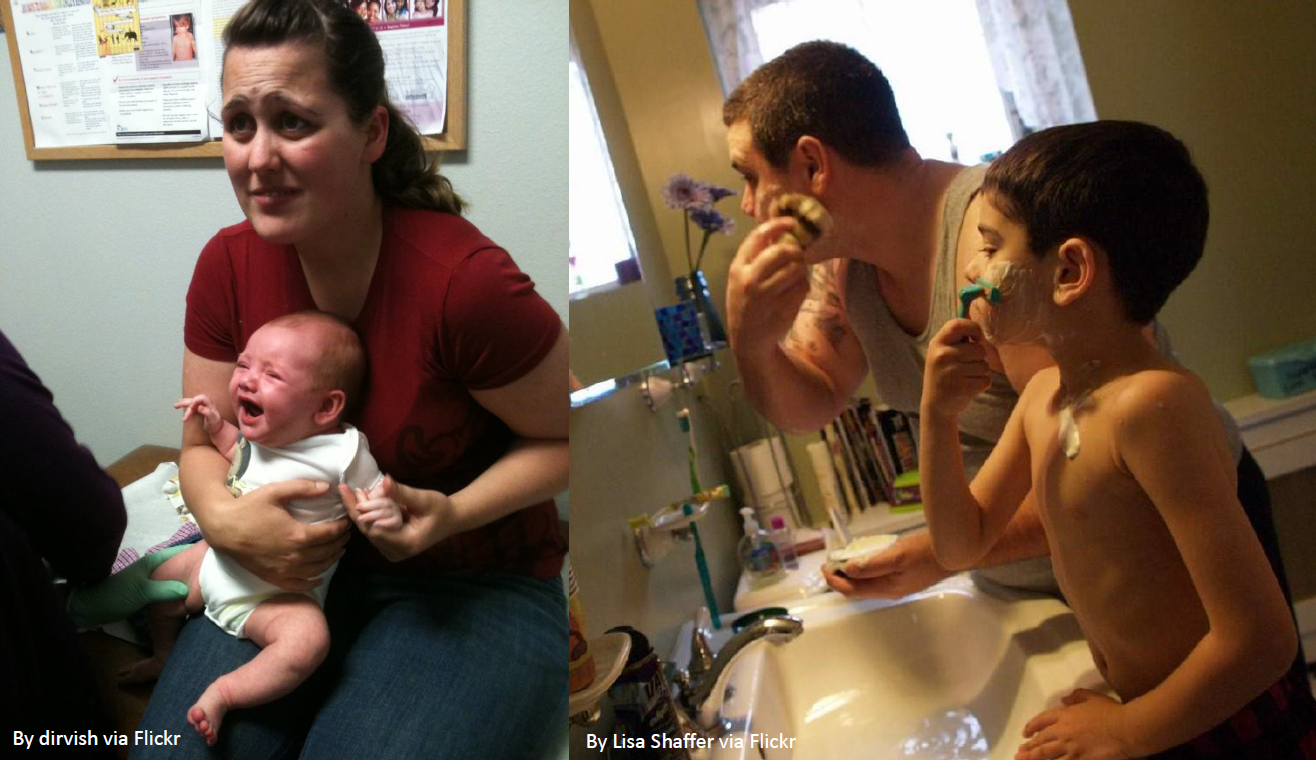Similar as in adults, children’s pain experience occurs within a complex biopsychosocial framework. However, the presence of specific factors and their relative share in contributing to the development and maintenance of pain in children are distinct from those in adults. Indeed, children with pain are not miniature adults with pain.
Part of what makes one unique is determined by the genetic material which is passed from parents to progeny. Subsequently, parents may, among other things, transmit (heightened) pain sensitivity through genetic disposition. For instance, through genetic factors influencing psychological (e.g. pain catastrophizing) as well as sensory (e.g. response to laboratory pain induction techniques) components of the pain experience. Furthermore, maternal pre- and perinatal stress and health behaviors (i.e. physical activity, diet, medication use) impact on early neurobiological development and may thus contribute to pain vulnerabilities in their offspring (Stone and Wilson, 2016).
Additionally, parents also form a substantial part of children’s social environment, thereby exerting a powerful impact on the pain experience of children. Indeed, social factors in pediatric pain usually take place in another context than in adults with pain (Palermo and Chambers, 2005).

According to the social learning theory, children may learn behavioral responses to pain from their parents through observing and imitating what they have observed (Bandura, 1977). When parents hold strong beliefs about a high threat value of (persistent) pain, even in the absence of structural damage, this may contribute to (chronic) pain vulnerability and related disability in their offspring. Indeed, such maladaptive beliefs may lead to parental modeling of maladaptive pain behaviors (e.g. activity avoidance because of the inappropriate belief that activity is dangerous) as well as parental reinforcement of children’s maladaptive pain behaviors through protective or solicitous responding to children’s pain complaints (Palermo and Chambers, 2005; Stone and Wilson, 2016).
In the context of acute painful events such as painful medical procedures (e.g. immunization), reassurance is the most common exhibited parental behavior. However, counterintuitively, this has been linked to higher levels of child pain and distress. Children perceive their parents as being fearful or worried when they try to reassure them, especially when this is accompanied by a fearful facial expression. This in turn leads to higher fear in children during parental reassurance compared to parental distraction (McMurtry et al., 2010).
In addition, high catastrophizing parents (i.e. parents who perceive their child’s pain as highly threatening) may experience high distress and, accordingly, have a higher tendency to restrict their children’s behavior in order to reduce or avoid pain (e.g. keeping their child home from school more frequently), thus having a negative impact on important child life domains such as school functioning (Caes et al., 2011; Logan et al., 2012).
Given the bulk of evidence that demonstrates the importance of parental factors (i.e. parental beliefs, behavior, cognitions, etc.) on children’s acute and chronic pain outcomes, targeting parents’ pain-related attitudes, protective behavior in response to children’s pain, and children as well as parents’ knowledge about pain and the integral role of psychosocial and physical factors in precipitating and maintaining pain, may be important in the treatment of functional disability in pediatric chronic pain.
Kelly Ickmans
2017 Pain in Motion
References and further reading:
Stone AL, Wilson AC. Transmission of risk from parents with chronic pain to offspring: an integrative conceptual model. Pain. 2016;157(12):2628-2639.
https://www.ncbi.nlm.nih.gov/pubmed/27380502
Palermo TM, Chambers CT. Parent and family factors in pediatric chronic pain and disability: an integrative approach. Pain. 2005;119(1-3):1-4.
https://www.ncbi.nlm.nih.gov/pubmed/16298492
Bandura A. Social learning theory. Englewood Cliffs, NJ: Prentice-Hall. 1977
McMurtry CM, Chambers CT, McGrath PJ, Asp E. When "don't worry" communicates fear: Children's perceptions of parental reassurance and distraction during a painful medical procedure. Pain. 2010;150(1):52-8.
https://www.ncbi.nlm.nih.gov/pubmed/20227831
Caes L, Vervoort T, Eccleston C, Vandenhende M, Goubert L. Parental catastrophizing about child's pain and its relationship with activity restriction: the mediating role of parental distress. Pain. 2011;152(1):212-22.
https://www.ncbi.nlm.nih.gov/pubmed/21126822
Logan DE, Simons LE, Carpino EA. Too sick for school? Parent influences on school functioning among children with chronic pain. Pain. 2012;153(2):437-43.